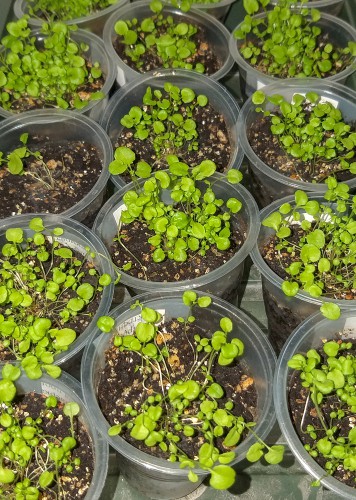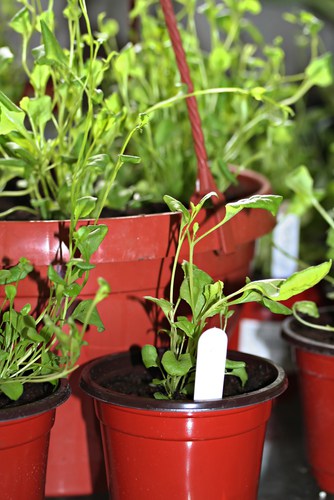Last updated on May 18th, 2022
Our site is reader supported, this means we may earn a small commission from Amazon and other affiliates when you buy through links on our site.
Lobelia seeds might look very small, difficult to sow and handle, but they are actually easy to sow and very easy to germinate. The rewards you get from growing Lobelia from seed are truly worth the effort. Trailing varieties of Lobelia such as ‘Trailing Saphire’ or ‘Trailing mixed’ can be grown in hanging baskets and containers to trail over the sides, whereas bush varieties of Lobelia, such as ‘Crystal Palace’, ‘Cambridge Blue’ and ‘White Lady’ are ideal for planting in beds and borders or just about anywhere else.

What you need:
- Your favourite varieties of Lobelia seeds.
- Seed tray, we recommend using seed trays with modules because this makes them easier to transplant.
- Good quality seed compost
When you are growing plants from seeds you have a few options in terms of the tools you use. The containers can be purchased in the form of seed propagating trays and these are plastic trays that usually have a bottom section in which you placed the compost, and then a plastic lid that affixes to the bottom section with an adjustable knob at the top to control air circulation.
We recommend trays with individual models
We personally recommend using trays that have individual models rather than one open tray because potting them up into pots later is much easier and disturbs the roots less.

Consider using a heated propagator
You could also use a heated propagator which will give a more consistent germination rate. They will also germinate more quickly than they would in a standard seed tray with no bottom heat. They are also fairly affordable to buy too.
Make do with what you already have
You can also recreate the same environment as a propagator by planting in a container you have handy, for example, using styrofoam cups or small plastic containers.

Keep them in a warm environment at a temperature of 15-20°C(60-68°F)
Having a place to put the tray or the containers is important because you need to maintain a constant temperature during the germination phase with access to a lot of indirect light such as a windowsill. Some people choose to use growing lights to help this process or a heating mat underneath, and sometimes both.
Sowing Lobelia seeds
When you get the seeds, you want to sprinkle them along the surface of a tray or container. If you have a seed tray with individual modules, sprinkle some seeds into each module.

DO NOT COVER SEEDS
Don’t cover them with anything because they require light to properly germinate. You can pat down the compost around them once you place the seeds on top.
Place the trays somewhere with regular temperatures between 15°C and 20°C. You can encourage germination by putting them in a heated propagator or onto a heated mat.
Water from the bottom if possible. If you are unable to achieve this easily you can place the seed tray into a large tray of water so the compost can soak up water from below. Failing this, we recommend watering with a spray bottle so that the tiny seeds are not washed around.
Germination should take between two and three weeks. You can sow the seeds from February onwards but be advised that no matter when you start the process it will take about seven weeks before you can transplant them outside. As they are summer bedding plants, this should not be done until the risk of frost has passed, which is usually around May.
Transplanting Lobelia seeds

At the 7-week mark, when the seedlings are big enough to go into a larger container, it’s time to transplant. At this stage, you can choose to transplant them directly into the garden if the risk of frost has passed.
If you want to do this you can acclimatise the plants to the outdoor weather a few weeks beforehand, but be careful not to introduce them to the outdoors until the risk of frost it’s over, you don’t want your hard work to be over before you have had time to enjoy their flowers. Put them in a container or in the ground with rich moist soil in a sunny position.


